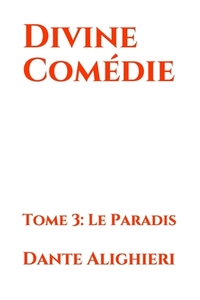Take a photo of a barcode or cover
The translation is wonderful too. I've flicked through a few different translations in bookshops and found them a little too archaic or unnecessarily ornate. This translation is pretty plain English for the most part; it just grabs you by the hand and gently guides you through the lines
Not easy or for the faint hearted, but it definitely pays off.
I've never read The Divine Comedy before: I was drawn to this edition because it was translated by Clive James, who is a magnificent author in his own right.
The warning signs were in front of me when I read the introduction: Mr James was hoping to give the reader an authentic experience by doing away with foot/ endnotes and was instead fleshing out the biographical details of the characters that Dante meets on his journey.
Big mistake: Dante appears to have met anybody who was anybody in Italian history in his travels throughout Hell, Purgatory and Heaven. Expecting a casual reader to not need some sort of reference guide is overestimating your audience in a big way. Or this member of it, anyway.
(Sidenote: anybody who has ever taught me or been in a class with me will be surprised to hear me say that. However, since I stopped needing to take notes or pay attention I have undergone a dramatic seachange in my attitude towards reference material. Somewhere along the way I became the sort of reader who is always putting down a book to look something up or find some other details to help flesh out my understanding of a text. That's the difference between set reading and reading for pleasure.)
But once I made it through Hell and was part-way through Purgatory, I found myself checking my history books and Wikipedia a little less often. Mostly because the names were starting to make sense in context and I could start enjoying the book as a book.
And there is a lot to enjoy. Apparently, James has taken a novel approach to the text and translated it into quatrains and used some modern language in places. As I said above, I haven't read the Comedy before and I am not a classicist (although I'm a snob, if that helps) so I didn't have a lot of baggage when it came to reading this. I knew it was a poem, though, so I was just grateful that I wasn't dealing with that fell beast known as the "prose translation."
This does make it more accessible to readers but I am not going to be the person to tell you if it makes it a lesser reading experience. I didn't care: when I finally stopped looking stuff up and started to read it properly, I loved it. It's immediate and exciting and filled with the gossipy details of a history written close to the time it happened.
And it works as poetry: translations are hard to manage on a regular basis when it's just prose that you're dealing with. Poetry is a different order of magnitude altogether - poetry that is 700 years old next year is an even more tricksy beast to tame and to make it readable and current is an astonishing task.
Just don't forget a reference book.
In the lengthy introduction, Robert M. Durling – professor emeritus from the University of California at Santa Cruz – along with Ronald L. Martinez do a great job of introducing the reader to this historical and important work, dividing it up with the biography of Dante, when he likely wrote The Divine Comedy, what Durling hoped to achieve with this translation, as well as what Dante sought to achieve as a writer and a poet in medieval Italy. The epic poem, spanning three volumes, helped create and cement the Tuscan dialect, written in terza rima, which is hendecasyllabic or lines of eleven syllables, divided into cantos.
Inferno is the most popular of the three volumes, mainly because of its content featuring graphic descriptions of the nine circles of hell, as Dante paints vivid pictures with words of what those suffering in these respective levels are experiencing. The story is of Dante himself traveling through hell, guided by Virgil. Along the way he meets many people he recognizes, whether they be renowned people throughout history, or local Italians or people of Europe that Dante himself has known in his lifetime.
This translation does a great job of keeping things easy and user-friendly for the reader. It is a bilingual edition, featuring the original medieval Italian on the left-hand side, and Durling’s English translation on the right. Those who have some grasp of the Romance Languages will often be able to glance over the Italian and pick out certain words and phrasings, comprehending Dante’s original words and descriptions. There’s also a detailed picture of all nine circles by Robert Turner, as well as further illustrations throughout the text. It is filled with endnotes for each canto, further expanded notes and an index; so whether you’re well versed in Italian medieval literature, or someone wanting to read this renowned work for the first time, Durling’s translation of The Divine Comedy, Volume 1: Inferno is an excellent starting point that will quickly draw you into the unforgettable world that Dante created over six hundred years ago.
Originally written on April 10, 2011 ©Alex C. Telander.
For more reviews, and exclusive author interviews, go to www.bookbanter.net.




